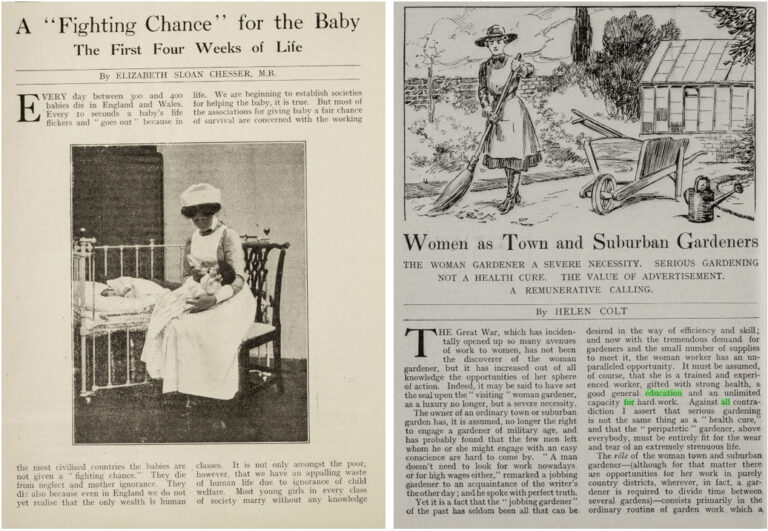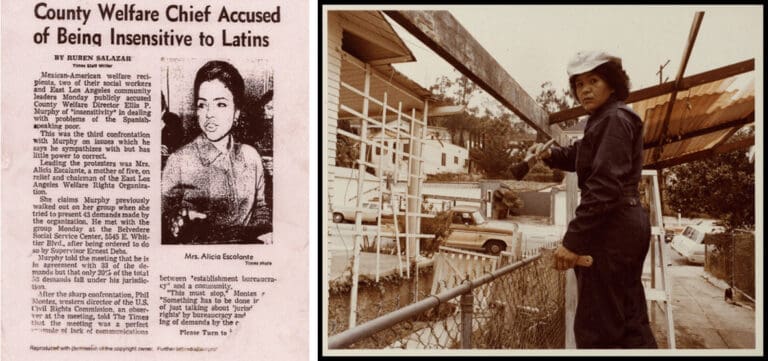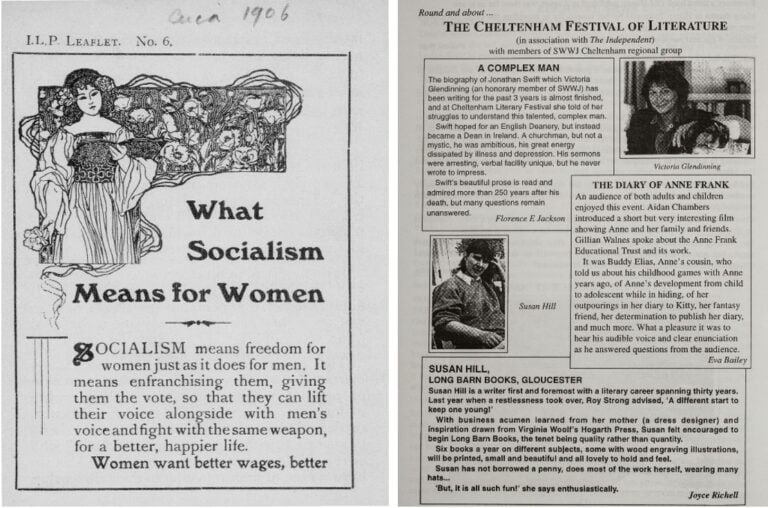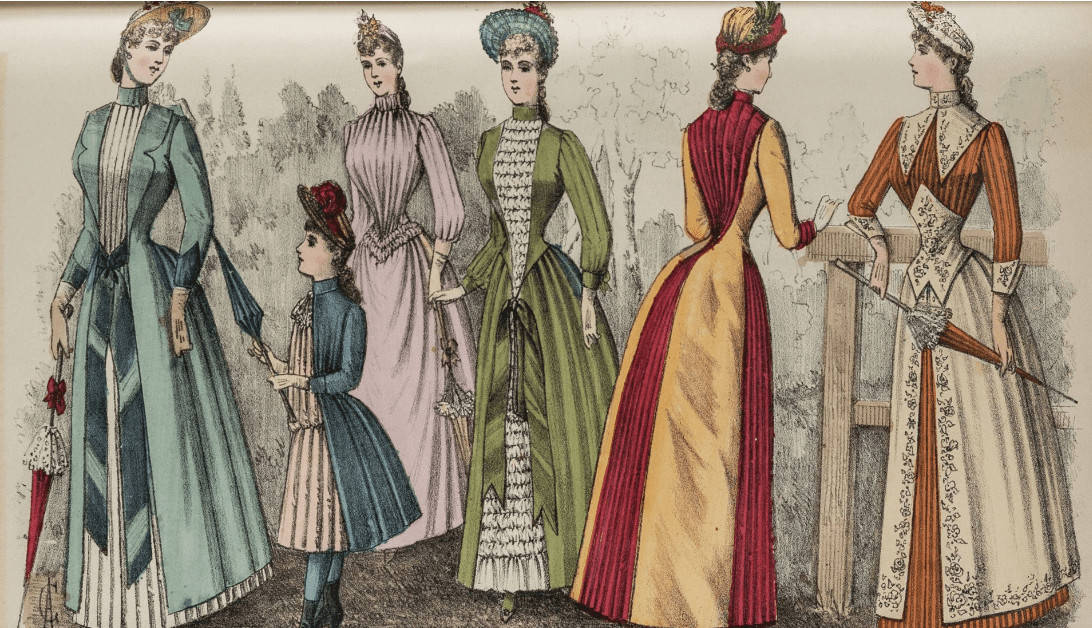│By Rachel Holt, Gale Primary Sources Acquisitions Editor│
The Women’s Studies Archive series
Before I begin, I want to provide a bit of background to the Women’s Studies Archive series. Launched in 2017, the first module – Issues and Identities – made archival collections concerning Women’s History from a wide range of sources available online. Shortly afterwards, I joined Gale as an Acquisitions Editor, and was both honoured and excited to be tasked with growing the Women’s Studies Archive programme. As both a feminist and a History graduate who specialised in women’s history, this was the dream assignment, combining both my personal passions with my professional work. The key question, however, was: where to go next? Although there are several areas that I would have loved to have explored for my own personal interest, my first task was to find out which primary sources would most benefit researchers currently working in Women’s History and Gender Studies if they were to be made available digitally.
What primary sources are sought in this research area?
Before selecting collections for the Women’s Studies Archive digital archive programme I spoke to scholars and academics researching and teaching in these, as well as connecting fields, to ascertain what they currently used and to what else they sought greater access. I monitored current research trends by analysing the syllabi for undergraduate and postgraduate courses, examined the coverage in key Higher Education textbooks and reviewed data collected on postgraduate theses by the American Historical Association. These investigations revealed that researchers needed primary sources that addressed three important requirements:
- More literature penned by women (particularly periodicals)
- Better representation of women from around the world (especially minority groups)
- Coverage of topics beyond the fight for women’s suffrage.
More female-authored materials
Voice and Vision contains several collections that focus almost solely on female authors or magazines and journals produced by women. It seems obvious that any digital archive concerning women’s history would mostly contain primary sources created by women but it must not be taken for granted and you’d be surprised at how much is content created for women. Most of history is told from the male perspective meaning that the female experience has often been overlooked or misrepresented. Such an imbalance gave rise in the 1970’s to the Herstory movement, driven by women-centred presses which aimed to offer histories written from a female perspective. It was therefore important, to better represent the female “voice”, that the Women’s Studies Archive contained more periodicals and monographs not only written by but illustrated and published by women. It was this concept that inspired the digital archive’s title: Women’s Studies Archive: Voice and Vision.

Right: Colt, Helen. “Women as Town and Suburban Gardeners.” Modern Woman, 20 Nov. 1915, p. 30+. Women’s Studies Archive, https://link.gale.com/apps/doc/URNGOW326061580/GDCS?u=webdemo&sid=GDCS&xid=85f7602d
A range of female-authored literature, not just periodicals
It was also pointed out by the academics who advised me that not only was there a lack of periodical content currently available (possibly due to the high cost of digitising such materials) but that increased access to a range of literature created by women is important to those researching feminist theories and “women’s voice”. Periodicals play an important part in Voice and Vision. Thanks to a collaboration with the British Library we have a range of magazines and journals created both by and for women from the nineteenth and twentieth centuries which shed light on a range of aspects of women’s lives, from work to leisure.
We also extended this principle and sought to better represent the female voice by bringing in other forms of female-authored literature: Voice and Vision includes a substantial monograph collection from the American Antiquarian Society which contains the output of predominantly female authors in a variety of forms including fiction, poetry, instructional guides (domestic and professional), personal letters, recipe books, memoirs, histories, pamphlets and leaflets, biographies and autobiographies, personal papers, children’s literature, commentaries on fashion, diaries and religious tracts. Looking to the future, I am also pleased to confirm that after Voice and Vision Gale will be growing the Women’s Studies Archive programme still further with a third instalment entitled Women Authors 1820-1922. Available in late 2020, it will contain rare and unique monographs penned solely by women which, significantly, have never previously been digitised.
![Left Pullan, Matilda Marian. The lady's manual of fancy-work: …Illustrated with over 300 engravings, by the best artists. Dick & Fitgerald, Publishers, [c1858]. Women's Studies Archive
Right Douthit, Mary Osborn, editor. The souvenir of western women: edited by Mary Osborn Douthit. [Presses of Anderson & Duniway company], 1905. Women's Studies Archive,](https://review.gale.com/wp-content/uploads/2020/01/Voice-Vision-blog-combined2.jpg)
Right: Douthit, Mary Osborn, editor. The souvenir of western women: edited by Mary Osborn Douthit. [Presses of Anderson & Duniway company], 1905. Women’s Studies Archive, https://link.gale.com/apps/doc/IIWLXR575266737/GDCS?u=webdemo&sid=GDCS&xid=b1f5a0c3
A more diverse, global perspective
The second instalment of the Women’s Studies Archive also increases representation of women’s experiences around the world, as well as minority groups. Much of history is not only told from the male perspective but often the white and privileged outlook as well. First-wave feminism is often described as “white feminism” because early women’s suffrage movements focused primarily on legal issues benefiting primarily white, middle- or upper-class women. I therefore sought out primary sources concerning women from outside of North America including African-American, Mexican-American, Indian and Irish women as well as religious minorities such as Jewish, Muslim and Quaker communities. For example, Gale has sourced three particularly strong collections from the University of California, Santa Barbara, concerning the Mexican-American women involved in the Chicano civil rights movement.

Right: Photographs, Home Repair, Set 2, 57 Photographs Undated. n.d. 9.undefined Comisión Femenil Mexicana Nacional Archives: Series V: Chicana Service Action Center (C.S.A.C.; Independent of CFMN in 1975) Box 48, Folder 4. University of California, Santa Barbara. Women’s Studies Archive, https://link.gale.com/apps/doc/YGRHPN469063093/GDCS?u=webdemo&sid=GDCS&xid=102c88c3

Right: General Administrative Files, Board of Directors 1980. 1980. MS Comisión Femenil Mexicana Nacional Archives: Series I: CFMN Administrative Records Box 15, Folder 3. University of California, Santa Barbara. Women’s Studies Archive, https://link.gale.com/apps/doc/GRIPDR786211468/GDCS?u=webdemo&sid=GDCS&xid=ee5f6396
Looking beyond women’s suffrage
Finally, it was stressed that future instalments of the Women’s Studies Archive series should focus on more than the struggle for women’s suffrage. The fight for women to gain acceptance, recognition and equal rights in society has unquestionably been a long and hard-fought battle, and the importance of research into female liberation is undeniable, but this is only one part of women’s history. Voice and Vision does include primary sources on women’s rights movements but we have also included coverage of other areas important to the study of women’s history such as the abolition of slavery, alcohol and temperance movements, American life, divorce, domestic service, education, employment, crime, poetry, health and hygiene, juvenile literature, mental health, moral reform, pacifist activism, political activism (particularly trade unionism and socialism), sexual discrimination, social reform and charitable organisations, women in publishing and women’s legal status.

Right: “The Cheltenham Festival of Literature.” The Woman Journalist, Winter, 1997, p. 14+. Women’s Studies Archive, https://link.gale.com/apps/doc/RKWRMO659793666/GDCS?u=webdemo&sid=GDCS&xid=63dd0393
![Left: Falconer, Agnes S. "Prominent Liberal Women." The Liberal Woman's News, July 1925, p. [81]+. Women's Studies Archive
Right: Van Kleeck, Mary. Russell Sage Foundation Women in the bookbinding trade by Mary Van Kleeck introduction by Henry R. Seager. Survey Associates, 1913. Women's Studies Archive](https://review.gale.com/wp-content/uploads/2020/01/Voice-Vision-blog-combined6-768x292.jpg)
Right: Van Kleeck, Mary. Russell Sage Foundation Women in the bookbinding trade by Mary Van Kleeck introduction by Henry R. Seager. Survey Associates, 1913. Women’s Studies Archive, https://link.gale.com/apps/doc/FVCKVJ760852416/GDCS?u=webdemo&sid=GDCS&xid=d639c9a1
An equal proportion of human history
As women make up 50% of humankind it stands to reason that they make up 50% of human history (if we’re being simplistic) and as academia increasingly recognises the importance of Gender Studies as a discipline (as well as its links to and interdisciplinary significance in fields such as Sociology, Nineteenth and Twentieth Century Studies, Literature, Cultural Studies, Media and Journalism, Politics, and more) the focus and study of Women’s History will continue to grow and become more varied. It is a very exciting time to be building digital archives in this area and Gale will continue to listen to researchers in order to meet their needs.
To see the Press Release for the new Women’s Studies Archive instalment, Voice and Vision, click here.
Want to learn more about the content in the first module of this series, Women’s Studies Archive: Issues and Identities? Check out Rachel Holt’s post ‘The History of International Women’s Day and the Origins of Women’s History Month‘.
Blog post cover image citation: “The Latest Paris Fashions.” Myra’s Journal, 1 Apr. 1889. Women’s Studies Archive, https://link.gale.com/apps/doc/WUSJWL326778030/GDCS?u=webdemo&sid=GDCS&xid=6ebe7cfc

